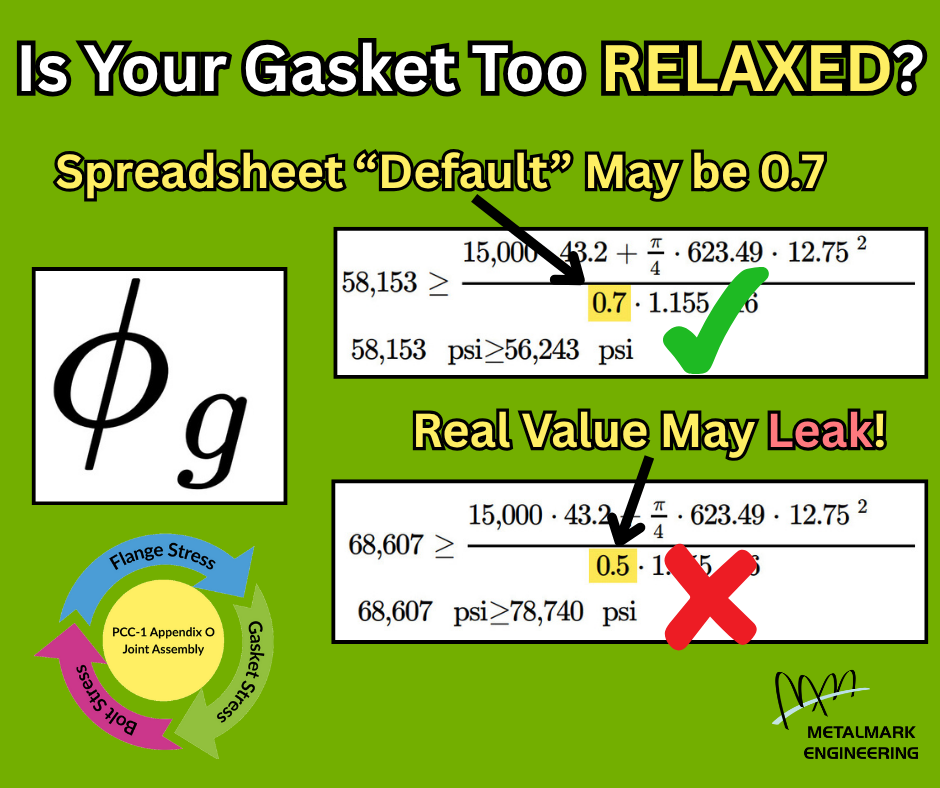Fraction of Gasket Load Remaining after Relaxation - Phi, g (ϕg)
When I think about phi, g, I think about relaxation. But have we been too relaxed about phi, g?
ASME PCC-1 Appendix O allows a default Fraction of Gasket Load Remaining after Relaxation (ϕg) of 0.7 if no data is available. I have found that this statement leads designers to use the “default” value for too many gasket types. 0.7 is too high for some PTFE gaskets and other gaskets with high compressibility and can lead to leaky flanges over time. Please consider your gasket material before selecting the Fraction of Gasket Load Remaining after Relaxation (ϕg) needed in the ASME PCC-1 Appendix O calculation.
Did you know that the Gasket Load Remaining after Relaxation (ϕg) may be lower for thicker gaskets? Please consider the possibility of using a lower Gasket Load Remaining after Relaxation (ϕg) value when increasing compressible gaskets from 1/16” to 1/8” thickness.
Unsure what “default” Fraction of Gasket Load Remaining after Relaxation (ϕg) your internal spreadsheets are using? Metalmark Engineering offers on-site training to teach your team how to use modern software solutions.

